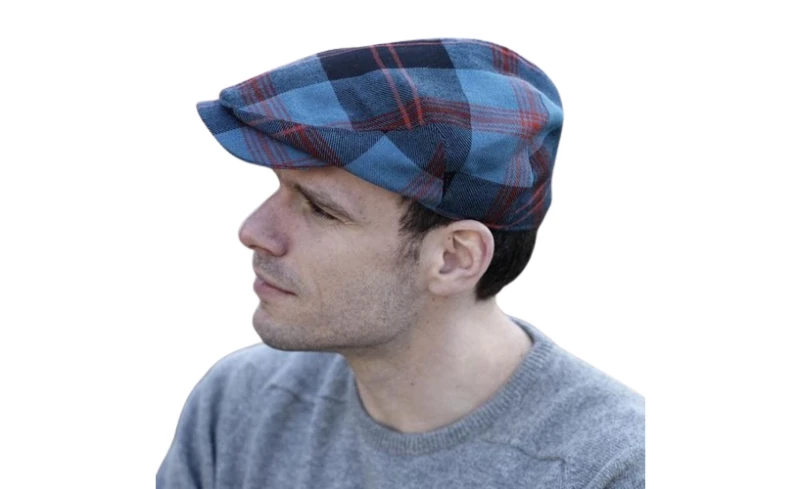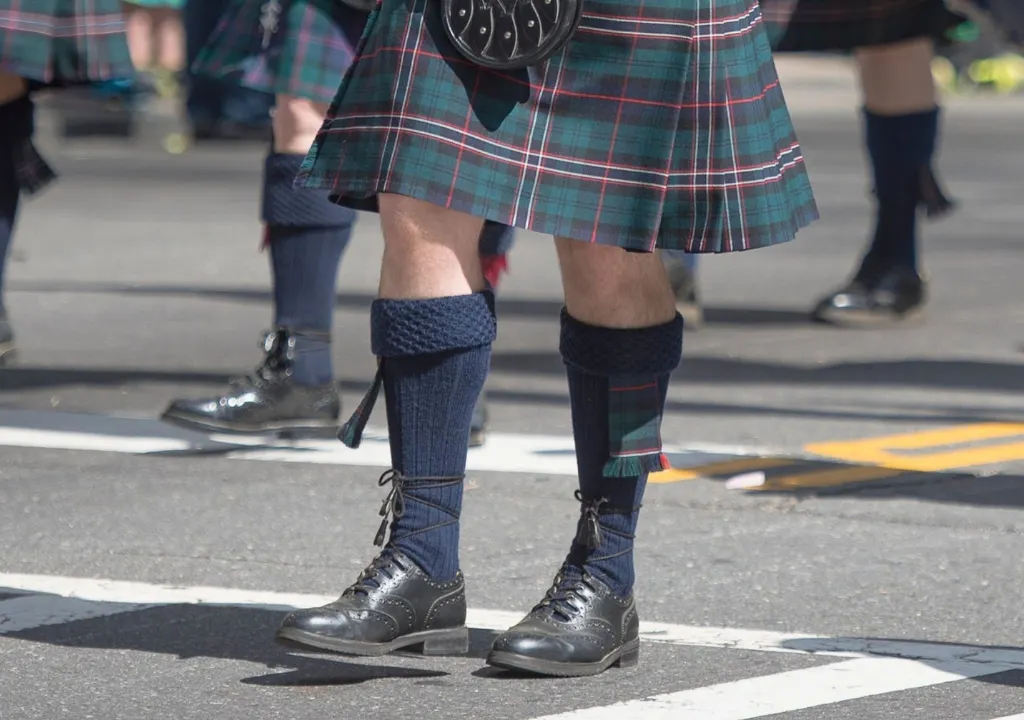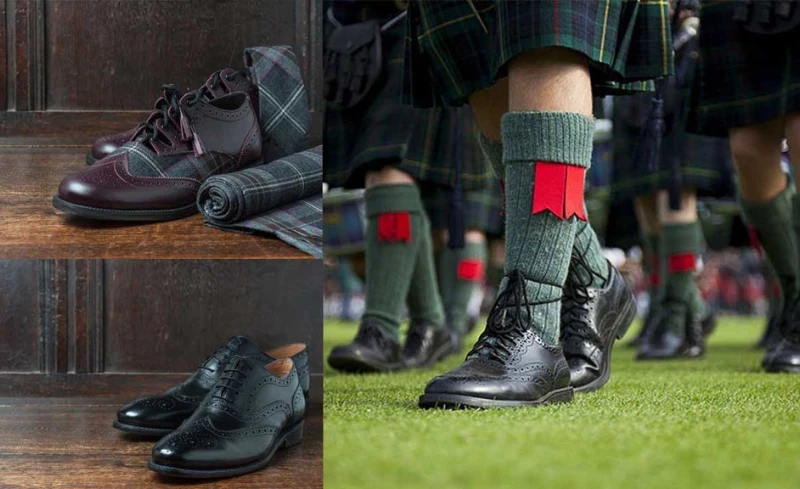Scottish hats and caps represent more than just fashion; they embody a deep-rooted tradition spanning centuries in Scotland's cultural tapestry. Each piece blends functionality with symbolic significance, from the distinguished Glengarry to the regal Balmoral bonnet and versatile flat caps. These hats are not merely accessories but storied artifacts that reflect Scottish identity, often adorned with clan crests or regional motifs.
Worn during formal occasions, Highland gatherings, and everyday wear, Scottish headwear preserves heritage while adapting to modern tastes. Their enduring appeal lies in their ability to transcend time, bridging the gap between past customs and contemporary fashion, making them essential elements of Scotland's sartorial legacy.
What Are Scottish Hats & Caps?
Scottish hats and caps encompass diverse headwear styles deeply intertwined with Scotland's cultural fabric. Beyond their practical functions, these pieces are potent symbols of heritage and identity, often associated with specific clans, regions, or historical events. Each hat tells a story of tradition and craftsmanship, from the iconic Glengarry, adorned with clan symbols, to the elegant Balmoral bonnet with its royal associations.
Worn proudly during ceremonies, formal gatherings, and everyday life, Scottish hats and caps reflect centuries of tradition preserved through their design and use. Whether in the rugged Highlands or bustling cities, these headwear pieces offer warmth and protection and serve as enduring emblems of Scottish pride and cultural resilience, bridging past and present with style and grace.
Types of Traditional Scottish Hats

Glengarry Hat: A Symbol of Heritage
The Glengarry hat is one of the most recognizable pieces of Scottish headwear. Originating from the early 19th century, Scottish regiments wore it and later adopted it into civilian attire. Its design features a fold-over brim and a feathered logo or badge, often denoting affiliation with a particular clan or military unit. The Glengarry is revered for its historical significance. It continues to be worn ceremonially, especially during Highland gatherings and formal events.
Balmoral Bonnet: Elegance in Highland Dress
The Balmoral bonnet exudes elegance and tradition within Scottish Highland attire. Named after Balmoral Castle, a royal residence in Scotland, this hat is characterized by its flat crown, ribbons, and often a pompom or tassel. Originally worn by Highlanders as part of their everyday dress, the Balmoral bonnet has evolved into a symbol of Scottish identity, worn proudly during formal occasions, weddings, and cultural celebrations.
Tam O'Shanter: Classic Style and Practicality
The Tam O'Shanter, a traditional Scottish bonnet, embodies both style and practicality. Its design includes a flat crown, often made of wool or Tartan, with a pompom at the top. The Tam O'Shanter gained popularity among men and women for its comfortable fit and distinctive appearance. It is commonly worn casually and has become synonymous with Scottish cultural festivals and events.
Scottish Caps for Men and Women
Scottish Flat Caps: Timeless Elegance
Flat caps, known as bonnets in Scotland, are classic headwear choices that transcend generations. Made from various materials, including tweed and wool, these caps offer warmth and durability, ideal for Scotland's unpredictable weather. Flat caps have evolved from traditional working-class attire to fashionable accessories, favored for their versatility and ability to complement casual and formal outfits.
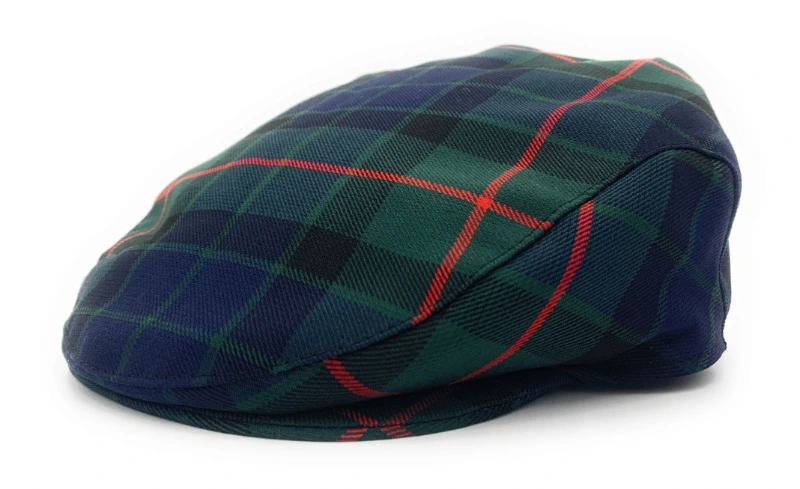
Scottish Berets: Versatile and Stylish
Berets hold a unique place in Scottish fashion, combining practicality with elegance. Originally associated with military regiments, berets have evolved into stylish accessories suitable for men and women. Scottish berets are made from wool or Tartan. They are cherished for their cultural roots and adaptability, fitting seamlessly into contemporary fashion trends while honoring traditional craftsmanship.
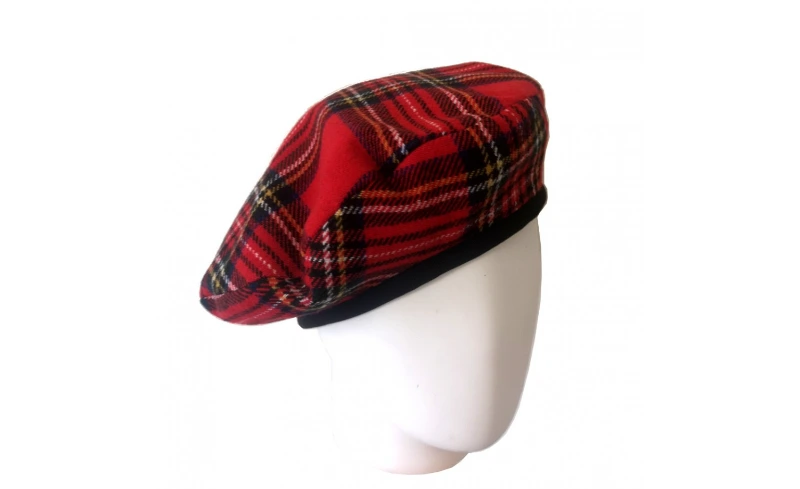
Scottish Wool Caps and Tartan Hats
Wool caps and tartan hats remain integral to Scottish fashion, celebrated for their warmth, durability, and timeless appeal. Wool, a natural fiber known for its insulating properties, ensures comfort in Scotland's often chilly climate. With its intricate patterns and symbolic significance, Tartan adds a touch of heritage to hats and caps, making them cherished accessories for locals and enthusiasts worldwide.
Highland Hats: Iconic Symbols of Scotland
Highland hats, including clan caps and distinctive headwear associated with specific regions or ceremonies, play pivotal roles in preserving Scottish identity and cultural traditions. These hats symbolize pride in Scottish heritage and are worn with reverence during Highland games, weddings, and other communal gatherings. Their significance transcends mere fashion, embodying centuries-old traditions and stories passed down through generations.
Scottish Hat Styles: From Tradition to Modern Fashion
Scottish hat styles continue to evolve, influenced by global fashion trends and contemporary design innovations. While traditional designs like the Glengarry and Balmoral bonnet remain timeless, modern interpretations and materials cater to diverse tastes and preferences. From sleek urban adaptations of flat caps to avant-garde twists on tartan berets, Scottish headwear embraces innovation while honoring its storied past.
Purpose Of Creating Them!
The Scottish flat-topped hat has a rich history rooted in both functionality and protection. Originating in the late sixteenth century, these hats were meticulously crafted from leather or tartan fabric to provide warmth during Scotland's harsh winters and to shield soldiers in battle.
Over the centuries, they evolved into essential military attire, adapting to various styles and preferences. Today, the kiltie variant remains particularly beloved among Scots for its distinctive charm and practicality.These hats have transcended their military origins to become iconic symbols of Scottish heritage. Worn proudly by members of Scottish clans, nobility, and individuals from different walks of life, they embody centuries of tradition and cultural pride.
Incorporating tartan accents into their design offers wearers a unique opportunity to showcase their clan's legacy, underscoring their deep-rooted connection to Scotland's storied past and vibrant cultural identity. Thus, these hats continue to hold significant meaning, not just as headwear but as enduring emblems of Scotland's enduring legacy.
Conclusion
Scottish hats and caps are timeless symbols of cultural heritage and style, deeply ingrained in Scotland's rich history. Each piece reflects craftsmanship and tradition passed down through generations, from the iconic Glengarry to the elegant Balmoral bonnet and practical Tam O'Shanter. These hats serve practical purposes and carry significant cultural symbolism, often denoting clan affiliation or commemorating historical events.
Worn proudly during formal ceremonies, cultural celebrations, and everyday life, Scottish headwear continues to captivate wearers worldwide with its functionality and elegance. As fashion evolves, these hats persist as enduring emblems of Scottish identity, offering a tangible link to Scotland's past while remaining relevant in contemporary society. Whether adorned with tartan patterns or embellished with feathers and pompoms, Scottish hats and caps epitomize pride, resilience, and a steadfast connection to tradition.
FAQs
The traditional Scottish hats are called Bonnets. The two main types are Tam o’ Shanter and Glengarry.
The most popular hat in Scotland is the Tam o’ Shanter, a traditional woolen bonnet with a distinctive pom-pom on top. It is widely recognized and worn by men, often during cultural events and traditional Scottish ceremonies.
In Scotland, the most favored hats are the Tam o’ Shanter and the Glengarry. The Tam o’ Shanter is a woolen bonnet with a pom-pom, while the Glengarry is a boat-shaped hat often worn with formal Scottish attire.
A Scotch hat typically refers to traditional Scottish headwear like the Tam o’ Shanter or the Glengarry. The Tam o’ Shanter is a woolen bonnet with a pom-pom, and the Glengarry is a boat-shaped hat often worn with formal Scottish attire.
A Scottish Jimmy hat, often referred to as a Tam o’ Shanter, is a traditional Scottish woolen bonnet. It typically features a round, flat shape with a pom-pom (toorie) on top and is associated with Scottish heritage and culture.
To wear a Scottish hat, such as a Tam o’ Shanter or a Glengarry, follow these steps:
Tam o’ Shanter:
- Place the hat on your head, ensuring it sits comfortably.
- Adjust the position so that the hat is centered.
- Tilt it slightly to one side for a traditional look.
- The pom-pom should be on top, slightly to the left or right.
Glengarry:
- Place the hat on your head with the peak facing forward.
- The crease should run along the top of your head.
- Adjust the hat so that it sits straight and snug.
- The ribbons should hang down at the back.
These hats are typically worn with traditional Scottish attire, such as a kilt, and are often part of formal or ceremonial dress.
Scotland.
In Scotland, the feather in a cap is often referred to as a hackle. It is a decorative plume worn on military or ceremonial headdresses, such as the Glengarry or Balmoral bonnet. The hackle’s color and style can indicate the wearer’s regiment or clan affiliation.


